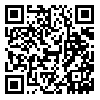BibTeX | RIS | EndNote | Medlars | ProCite | Reference Manager | RefWorks
Send citation to:
URL: http://payavard.tums.ac.ir/article-1-5319-en.html

 , Pouran Raeissi
, Pouran Raeissi 
 , Farhad Ghaffari
, Farhad Ghaffari 
 , Mohhamadreza Maleki
, Mohhamadreza Maleki 
 , Mehrnush Jafari *
, Mehrnush Jafari * 
 1
1
Background and Aim: Healthcare processes have caused many dangers to patients, and the increase of medical errors is one of the most important consequences of such processes. The present research is conducted to reduce medical errors through presenting a model to control them.
Materials and Methods: In this mixed (quantitative-qualitative) research, a conceptual model was assembled. Then using the model and an interview, a questionnaire was made. The interview and the researcher-made questionnaire were used to collect data. The statistical population included the related people and the practitioners involved in medical errors in Tehran University of medical Sciences (TUMS) hospitals. The sample consisted of 252 employees who were non-randomly selected from those hospitals. Once the affecting factors were determined, the data were analyzed through factor analysis technique. The gathered data were analyzed using descriptive and inferential statistics. Finally, the research model was presented.
Results: The selected individuals pointed out 9 factors controlling the medical errors: culture, factors associated with patients, factors related to providers, factors associated with errors, structural factors, role of disclosure, error registration, individual factors related to reporting, and organizational factors related to reporting. The 9 factors are the subdivisions of three main factors which account for 57/46% of the total variance of data. The most decisive power is related to disclosure 0.737 and the least (0.053) pertains to structure.
Conclusion: Discloser of medical errors and their registration are factors which are effective and essential in controlling medical errors in TUMS hospitals.
| Rights and permissions | |
 |
This work is licensed under a Creative Commons Attribution-NonCommercial 4.0 International License. |



